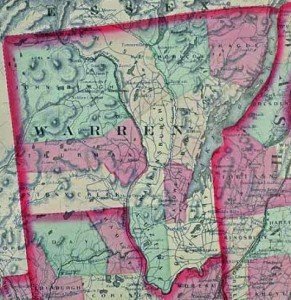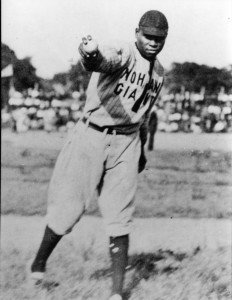 In one evacuated village, Florence Bullard’s (see Part 1 of the story) crew was forced to work from a hospital cellar, which she described as a cave. Under very harsh conditions, they treated the severely wounded soldiers who couldn’t be moved elsewhere. In a letter home, she noted, “I have not seen daylight for eight days now and the stench in this cave is pretty bad- no air, artificial light, and the cots so close together you can just get between them.
In one evacuated village, Florence Bullard’s (see Part 1 of the story) crew was forced to work from a hospital cellar, which she described as a cave. Under very harsh conditions, they treated the severely wounded soldiers who couldn’t be moved elsewhere. In a letter home, she noted, “I have not seen daylight for eight days now and the stench in this cave is pretty bad- no air, artificial light, and the cots so close together you can just get between them.
“The noise of the bursting shells is terrific at times. Side by side I have Americans, English, Scotch, Irish, and French, and apart in the corners are ‘Boche’ [a disparaging term applied to German soldiers]. They all have to watch each other die, side by side. I have had to write many sad letters to American mothers.”
A bit later she wrote, “I have been three weeks now in this cave. It’s a dark, damp, foul-smelling place, but there is help to give and one must not complain. But it is terribly depressing and, for the first time, I find myself in a bit of a nervous state. The roaring of the cannon and the constant whizzing through the air of these terrible ‘obus’ [shells launched by a howitzer-type cannon], with never a thing to change the tension, is wearing.”
Florence went on to describe a sad evening where a man had to have both legs and an arm amputated, and a woman suffered severe burns from a bombing attack. “… every inch of her body was like an apple that had been baked too hard, and the skin all separated from the apple. That was all I could compare it to. You can imagine that she suffered until midnight, and then she died. I do not know what is to become of everyone if this war does not end pretty soon.”
Three times Florence’s group was evacuated just ahead of approaching German troops. When a friend came to check on her just as they were fleeing 13 straight hours of bombardment, a shell landed nearby at the moment they were shaking hands. The windows were shattered by the explosion, throwing shards of glass at their feet. It was that close.
In her own words, she described the ferocity of the attack: “The first shell broke on us at one a.m. on Monday, the twenty-seventh. It was a veritable hell broken loose! I know of no language of mine that could describe it.
“All that day and the following, it never let up a minute. Our hospital was struck nine times, corridors caving in and pillars falling. We were told at noon to make all the preparations to leave at any minute, taking as little baggage as possible.”
Such was the Bullard family’s concern that her brother sent Florence the money for passage home. When it arrived, she reminded him of her duty, and that she could not abandon the men in need. Her superiors told her the same—Florence’s training, skill, and experience were critical to their success, and she was needed to remain at the front.
 Bullard’s commanding officer stated it succinctly: “… the next four months will be very tragic ones for us all. We cannot spare you, for we cannot refill your place, and when you explain just that to your family, they will be the first to see it as we see it.”
Bullard’s commanding officer stated it succinctly: “… the next four months will be very tragic ones for us all. We cannot spare you, for we cannot refill your place, and when you explain just that to your family, they will be the first to see it as we see it.”
In another letter, Florence described the eerie, moonlit march of American troops: “It seemed as if miles of them went by. The grim, silent soldiers, the poor hard-worked horses, all going steadily toward that terrible noise of the cannon.”
The next day, a great number of those very same men were treated by her medical unit. It began with nearly a thousand in the morning, and as the battle raged, Florence noted, “That went on all day and night, new ones arriving as fast as others were out. It was a busy place, our ambulance drivers driving up one right after the other, and all the time the steady stream of artillery going past, and more troops.”
When the surgeries finally abated, Bullard quickly assumed other duties: “… I simply ran from one patient to the other. My chief gave me permission to give hypodermics at my discretion, and oh, how we all did work to make them live! …It was gruesome—the dying, the moans, the constant “J’ai soif” [I’m thirsty]. I cannot talk much about it now—too fresh in my memory.”
The next day was more of the same, and with the German’s looming, evacuation was called for. Given the option, Florence and several doctors opted to stay behind despite warnings they might be captured. A tearful good-bye ensued, with their pending death a stark reality.
The soldiers’ desperate escape was described by Bullard in moving prose: “It was the saddest sight I have ever seen. The stretcher bearers carrying all that were unable to walk … and the new arrivals who had come in, getting to the train the best way they could. For instance, a man with his head or face wounded would carry on his back a man whose feet were wounded, and one whose arm was wounded might be leading one whose eyes were bandaged.”
As the last men boarded, a new order for mandatory evacuation was issued. Enemy troops were preparing to overrun the area. But for that circumstance, it may have been Florence Bullard’s last day on earth.
The details of such harrowing events were unknown to all except her war companions and those back home who received letters from Florence. But the French government had long been aware of her great contributions, which they acknowledged in September 1918 by conferring upon Florence the Croix de Guerre medal (the Cross of War).
The official citation read: “She has shown imperturbable sangfroid [composure] under the most violent bombardments during March and May. Despite her danger, she searched for and comforted and assisted the wounded. Her attitude was especially brilliant on July 31, when bombs burst near.”
 Just two months later, the war ended, and Florence returned home. In February 1919, she was treated to a grand reception at Glens Falls, where she received a donation of $600. A good long rest was in her plans, but by May she was on the battlefront again, this time in the United States. The Red Cross of America sent Florence on tour to Redpath Chautauqua facilities and other venues to promote good health and sanitation practices.
Just two months later, the war ended, and Florence returned home. In February 1919, she was treated to a grand reception at Glens Falls, where she received a donation of $600. A good long rest was in her plans, but by May she was on the battlefront again, this time in the United States. The Red Cross of America sent Florence on tour to Redpath Chautauqua facilities and other venues to promote good health and sanitation practices.
The mission was to improve community health across the country, incorporating much that had been newly learned during the war. Besides treating so many wounded soldiers, the medical corps had tended to refugees suffering from malnutrition, starvation, and a host of diseases, many of them communicable.
Among the issues addressed by Florence were home cooking, household hygiene, caring for the sick at home, and the work of the public health nurse. She was widely lauded for her speaking appearances as well as for the wonderful services she had provided during the war.
By 1920, Florence was again working as a private nurse. She later turned to hospital work, eventually becoming assistant superintendent at Poughkeepsie’s Bowne Memorial Hospital in Dutchess County, New York.
Florence Bullard—North Country
native, nurse extraordinaire, dedicated humanitarian, and a true American hero—died in 1967 at the age of 87.
Photos: Above, WW I improvised field hospital in France- Middle, WW I Howitzer- Below, WWI French Red Cross ambulance.
Lawrence Gooley has authored ten books and dozens of articles on the North Country’s past. He and his partner, Jill McKee, founded Bloated Toe Enterprises in 2004. Expanding their services in 2008, they have produced 19 titles to date, and are now offering web design. For information on book publishing, visit Bloated Toe Publishing.
 To celebrate Warren County’s Bicentennial the Chapman Museum in Glens Falls is partnering with the Warren County Clerk’s Records Center to feature an exhibit of rare manuscripts, maps and legal documents, many of which date back to the early days of the county.
To celebrate Warren County’s Bicentennial the Chapman Museum in Glens Falls is partnering with the Warren County Clerk’s Records Center to feature an exhibit of rare manuscripts, maps and legal documents, many of which date back to the early days of the county.











